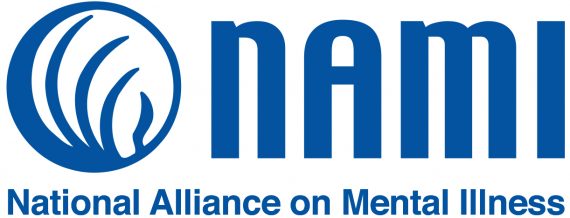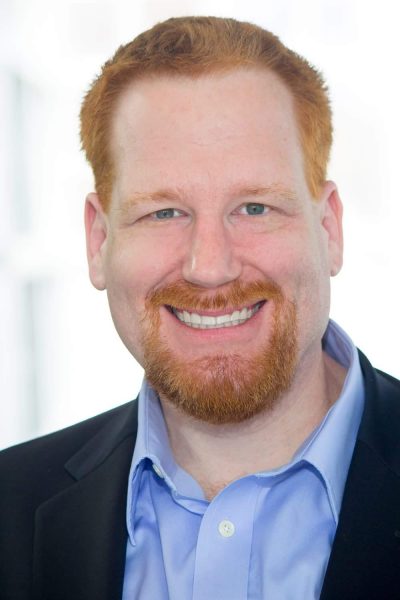
(7-20-18) The unfortunate death of mental health champion Dr. Fred Frese III this week interrupted the series of guest blogs that I have been posting about the National Alliance on Mental Illness . Four of those blogs were written by participants in a telephone conference call organized by a consulting group hired by NAMI to help its board design a multi-year strategic plan. All of the bloggers asked NAMI to create a Families of Adult SMI Advisory Council. I posted NAMI’s response Monday – a heartfelt reply written by its newly elected NAMI President Adrienne Kennedy. This final guest post in the NAMI series has been written by Gabe Howard, a speaker, podcaster, and advocate, who has a mental illness and has written for me previously. I consider him a fair-balanced activist who, like many of us, tries to understand and appreciate different points of view.)
A Peer’s Perspective: Who Does NAMI Represent?
I first became aware of The National Alliance on Mental Illness (NAMI) when my desperate family discovered them in Tennessee and took the Family-to-Family class. Because of NAMI, my family was able to learn about mental illness and bipolar disorder, and receive much-needed support while I was in and out of hospitals and psychiatric offices 12 hours away in Ohio.
When I was more stable, I looked into NAMI in Ohio, where I lived, and realized they had no programming geared toward people living with mental illness. There were no support groups or classes aimed at “consumers” (what peers were called 10 years ago). This did not deter me, so I called the state NAMI affiliate, scheduled a meeting, and asked if there was any way at all I could be involved.
NAMI Ohio introduced me to NAMI Franklin County and the Executive Director asked me if I’d like to volunteer for the NAMIWalks program. All I had to do, they said, was be a cheerleader for the rights of people with mental illness – and maybe raise a little money. That year, ours was the number one walk team, raising thousands of dollars – and that made people notice me as an advocate for the first time.
My Time as a Peer Inside NAMI
Because of my success as a NAMIWalks team captain, I was nominated to the board of directors for the state affiliate and elected to serve on NAMI National’s consumer council. I also became the local affiliate’s walk manager and, for the next three years, I grew inside the ranks of the organization.
Being a peer inside the NAMI walls is no easy task. While I was surrounded by truly exceptional people, their perspective is almost entirely from a caregiver’s point of view. There weren’t many peers on the board. If I recall correctly, the maximum number of peers on the board at the same time was three, compared to 20+ non-peers.
To NAMI’s credit, they recognized this and created a seat – the seat I held – called the consumer council representative. This position was created to ensure that people with lived experience with mental illness had a voice inside NAMI.
However, the position was non-voting.
During a public debate, the board president stated that NAMI was an organization that fought for families of people with mental illness and that was their principal charter. I spoke up immediately and said that NAMI is not just a family member organization, but is inclusive of all people – and that we must stop forgetting that, because it makes peers feel unwelcome.
Our board president immediately apologized and stated that he misspoke and agreed. But, a few days later, the executive director told me it was inappropriate to correct the board president. I asked why an incorrect statement by a family member is worth more than the correct statement by a peer. I was told that it was best if I let this go, as it served no productive purpose.
In other words, I ― a board member ― was specifically told that my facts were not welcome if they contraindicated something a non-peer said.
During my time on the board, I continued to fight for peer programming to be offered at every affiliate in the same way that family programming is. I worked to change the voting rules for the consumer council seat, which I achieved after three years. While I was never able to vote while a board member, the person who filled the role after me was.
My time with the organization was not wasted, but I can conclusively say that my state’s NAMI favors family member involvement over that of the peer. I was a peer in the organization and I did not feel entirely understood. On the worst days, I felt like a token and, on the best days, I felt like a mascot.
What I never once felt like was an equal. From not being able to vote, to being reprimanded for disagreements, to having the things that were important to me ignored, I always felt like I was less than my fellow board members.
For these reasons and more, it’s fascinating to me that family members don’t feel heard at NAMI National. (It’s important to point out that each affiliate and state agency has a different flavor – they are largely independent of one another). From the vantage point of the majority of peers I have the pleasure of working with, we don’t feel that NAMI represents us at all.
This, of course, makes me wonder whom exactly they do represent. If the average peer doesn’t feel that NAMI is backing them, and the average family member with a seriously mentally ill (SMI) loved one doesn’t feel that NAMI is backing them, who does feel represented?
I also think it’s worth mentioning that most family members fighting for more representation by the national organization are quick to point out that NAMI started as a family member organization. Many family members have used the term “mission creep” to define NAMI focusing on peers at all. This is all just to say that, historically, NAMI hasn’t paid much attention to people like me.
It’s a bit troubling to me that when peers felt unheard by NAMI, no one really cared. Now family members see NAMI National (not even most NAMI affiliates) give increased attention to peers and immediately there is controversy.
Where was this concern when peers were excluded?
All that said, I have many wonderful memories of my time with NAMI. I’m still friends with many of the incredible people I met there. I’m on good terms with staff and the executive director and I still volunteer for the organization whenever I’m able. NAMI helped me become a better advocate and gave me some of my first speaking gigs. While I don’t agree with everything that NAMI does, I’m quite confident they do more that I agree with than disagree with. (For what it’s worth, I don’t agree with everything my wife does, either.)
From an advocacy perspective, I want to say that I agree with the family members who want to focus on SMI. I’m hard pressed to find flaws in their logic to triage the most serious cases first. There is, after all, a world of difference between an untreated person with psychosis who is homeless and a peer in my position — in recovery with ample resources.
People with serious and persistent mental illness are in desperate need of resources. Mental illness is a cruel disease — not just to the person suffering, but to all the people forced to watch. Families are torn apart by homelessness, suicide, and, in rare cases, violence.
As a person with mental illness and a conscience, I’m equal parts outraged and saddened by how little compassion our society has for the sickest of the sick. People with SMI are particularly vulnerable and I don’t blame these family members at all for fearing their voices will be lost.
Because I know exactly what it’s like not to have one.

GABE HOWARD is an award-winning writer and speaker who lives with bipolar and anxiety disorders. He’s the host of the weekly Psych Central Show, an iTunes Top Ten podcast. He also co-hosts A Bipolar, a Schizophrenic, and a Podcast, which explores life through the unique double lens of a young woman living with schizophrenia and a guy living with bipolar. He also writes for WebMD, Psych Central, bipolar magazine, and other distinguished publications. Connect with him online here.



